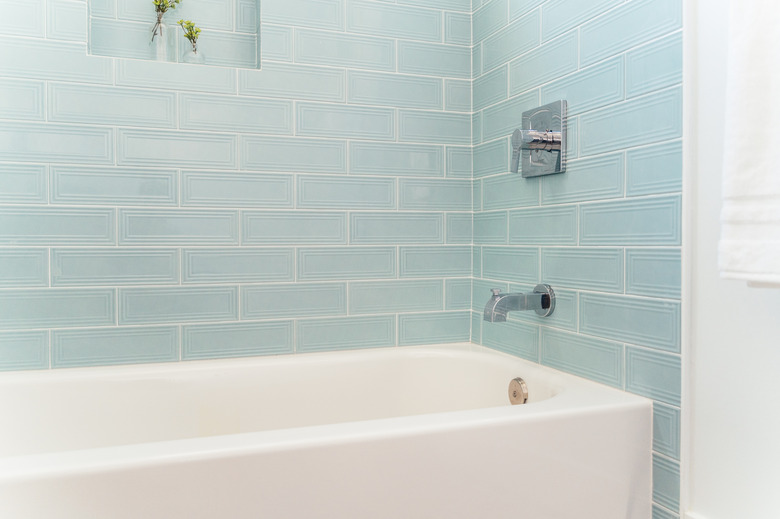How To Remove Mildewy Caulk From Your Bathtub
We may receive a commission on purchases made from links.
Mold almost always poses a problem in the bathroom because of the moisture there, but it's a particularly pernicious one when it grows behind bathtub caulking. Mold causes unsightly blackening that can make the bathroom appear dirty even when you clean regularly, and it can even cause health problems, according to the U.S. Environmental Protection Agency. You can't wash this mold away; the only way to handle it effectively is to remove the moldy caulking and recaulk.
Gathering Your Supplies
Gathering Your Supplies
Removing old silicone caulking is no picnic — no solvent dissolves it, and you won't find a magic one-step removal tool. You'll need a razor knife for cutting and scraping, a putty knife and a pair of pliers, because pulling the rubbery material with your fingers can be difficult.
Rubbing alcohol and white distilled vinegar both soften caulk to make it easier to pull off, and vinegar has the added benefit of being a mold disinfectant. It's a good idea to keep a hair dryer handy, because heating hard-to-remove caulk is another way to soften it and make it easier to pull off. You'll need a tube of silicone and a caulking gun for recaulking.
Removing Old Caulk
Removing Old Caulk
Moldy caulk tends to lose its grip on the bathtub and the wall behind it, so start by slicing into a section with the knife, gripping one of the ends with pliers and pulling. You may get lucky and be able to remove most of it that way, but it's more likely you'll have to cut and scrape, using the knife and putty knife.
Keep the scraper handles at a low angle with respect to the bathtub to prevent nicking the finish. If removal proves difficult, soften the old caulk by moistening a cloth with alcohol or vinegar and leaving it on the caulk for about half an hour. You can also try heating the caulk with a hair dryer set on low heat, says Home Repair Tutor.
Removing Caulk Residue
Removing Caulk Residue
The residue left over after you've pulled away most of the caulk is even more difficult to remove than the caulk, and it has to go. If you leave it, the new material won't adhere, and you won't solve the mold problem.
Soften this residue with vinegar or alcohol and scrape it with the razor knife. In some cases, you may be able to roll it into balls with your finger. You can also remove the residue by soaking an abrasive sponge scrubber with alcohol or vinegar and rubbing it. Avoid sandpaper — it can scratch the tub, and it clogs.
Applying New Caulk
Applying New Caulk
Before you apply a new bead of clear, white or colored silicone caulk, disinfect the area behind the old caulk by spraying with full-strength vinegar and allowing the vinegar to remain there until it dries.
Family Handyman suggests cutting the tip of a tube of caulk at an angle so that the opening is about 1/4 inch in diameter and applying the caulk along each seam in a continuous bead, pulling the caulking gun toward you as you keep steady pressure on the trigger.
Smooth the caulk by running your finger over it, wiping your finger frequently on a rag to keep it clean. Let the caulk cure overnight before using the bathtub.
